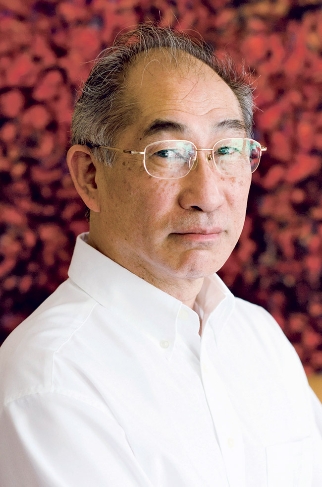Witnessing The Nanjing Massacre
The two-day Hawaii Book & Music Festival is coming to town, and with it a star-speckled array of more than 500 of Hawaii’s most notable authors, musicians and celebrities. Nonstop activity in 150 different venues includes hula, song and music performances, children’s activities areas and a schedule packed with panel discussions. One highlight of the festival is Telling Lives.
“Telling Lives is a series of panels, all talking in some way about how we tell the stories of ourselves or others. Many people have called this the age of memoir, and if you look at the nonstop circulation of reality TV, social media, celebrity magazines and websites, and ‘news’ stories often tightly focused on stunning or intriguing events in people’s lives, it certainly is true that while human beings always have been interested in their own stories, these days we get them faster, more frequently and in ever increasing numbers, tailored for every possible audience’s taste,” says director of the Center for Biographical Research at UH-Manoa Craig Howes, who also is the principal scholar of the Telling Lives panels and executive director of program sponsor, Hawaii Council for the Humanities.
Seasoned Bamboo Ridge Press author Wing Tek Lum will be one of the panelists sharing his latest offering, The Nanjing Massacre: Poems, at the noon, May 19, Creative Witness: Docupoetry segment. In a steady barrage of visceral detail, the celebrated Hawaii poet rewinds history to 1937 in Nanjing, China. His compilation of more than 100 poems written over a period of 15 years is a testament to six soul-haunting weeks of rape and carnage during Chinese occupation by Japanese forces. Lum rages poetic from every angle, on one page presenting a snapshot of a family fleeing the chaos, on others he alternately attacks from the view of the Japanese soldiers, or suffers in the words of their victims: the children, the women, the slain.
“These are stories that need to be told,” says Lum. “The disgust or outrage over a particular incident that I read was channelled into the writing of a poem. There was a purpose to it that took precedence over any personal feelings. Hopefully that same outrage, panic or sense of revenge that I felt will be felt by the reader.”
As he points out in his book, history is lopsided, because it’s told by those who survive. The dead have no voice. Lum fleshed out historical accounts and photographic images from the massacre to lend an echoing scream to these forgotten victims, to make us all witnesses of the horror.
In Pragmatic, from the plunderer’s point of view, he writes:
“When army rations taste bland, a family’s cellar is plundered. A small town needs to be cowed, so the elders are beheaded in a square, the townspeople beseeching.
A resistance fighter iscaught; information must be tortured out of him. Too many prisoners of war have surrendered like cowardly dogs. There is no place to keep or feed them, so they are slaughtered en masse.”
In another, An Autopsy at the Moment of Death, he describes further atrocity:
“There are purple bruises on her shoulders and upper arms marking where they held her down.
Small rocks are imbedded into her back around her shoulder blades from when they pressed her into the ground.
Her vocal cords are raw from her screaming.”
Lum gives the postmortem a platform of power against the aggressors in I Am Not Dead, where a lifeless body rises in revolt:
“My body will rise up arms heavy as anvils, swirling like scythes my shout like ten thousand demons my eyes blazing straight into the hearts of our enemies to strike them down sever their heads and slit their bellies grind up their souls into so many pieces of dust …”
Flowing through Lum’s creative veins is lifeblood thick with the agony of the restless dead. Basing his fiction in historical truth, he set out to evoke a sense of literary truth for the reader. The visions are so shocking as to be incomprehensible. However, says Lum, they’re starkly realistic: “This is what happened; it happens in all wars. We live in a world where a lot of the violence, a lot of the suffering, is desensitized, which is why I had (a sense of purpose) in telling the true stories of what happened to people during this particular event.”
Lum’s book ($18) will be available at his presentation and in the Bamboo Ridge tent, as well as online and at local bookstores.
Also on a panel at the Telling Lives portion of the festival will be yours truly, speaking May 18 at 2 p.m. on Instant Lives: Deadline Biography, regarding my interviews and articles on prominent local and international personalities for MidWeek. A fantastic lineup of additional writers also will be sharing: “The Telling Lives panels will feature biographers, memoirists, interviewers, oral historians, biography scholars, teachers of memoir, reporters, noted entrepreneurs – in short, a wide range of people who can talk about how and why people tell their stories, and what those stories tell us about ourselves,” says Howes. “Sports lives, musical lives, spiritual lives, lives online, lives on television, lives on radio, children’s lives, controversial lives, Hawaii lives – all these subjects will be discussed by people who produce these lives on the page, in the air or on the screen.”
the TICKET stub
When: May 18, 10 a.m.-5 p.m., and May 19, 11 a.m.-6 p.m.
Where: Honolulu Hale grounds (530 S. King St.)
Cost: Free admission and parking
More Info: hawaiibookandmusicfestival.com






